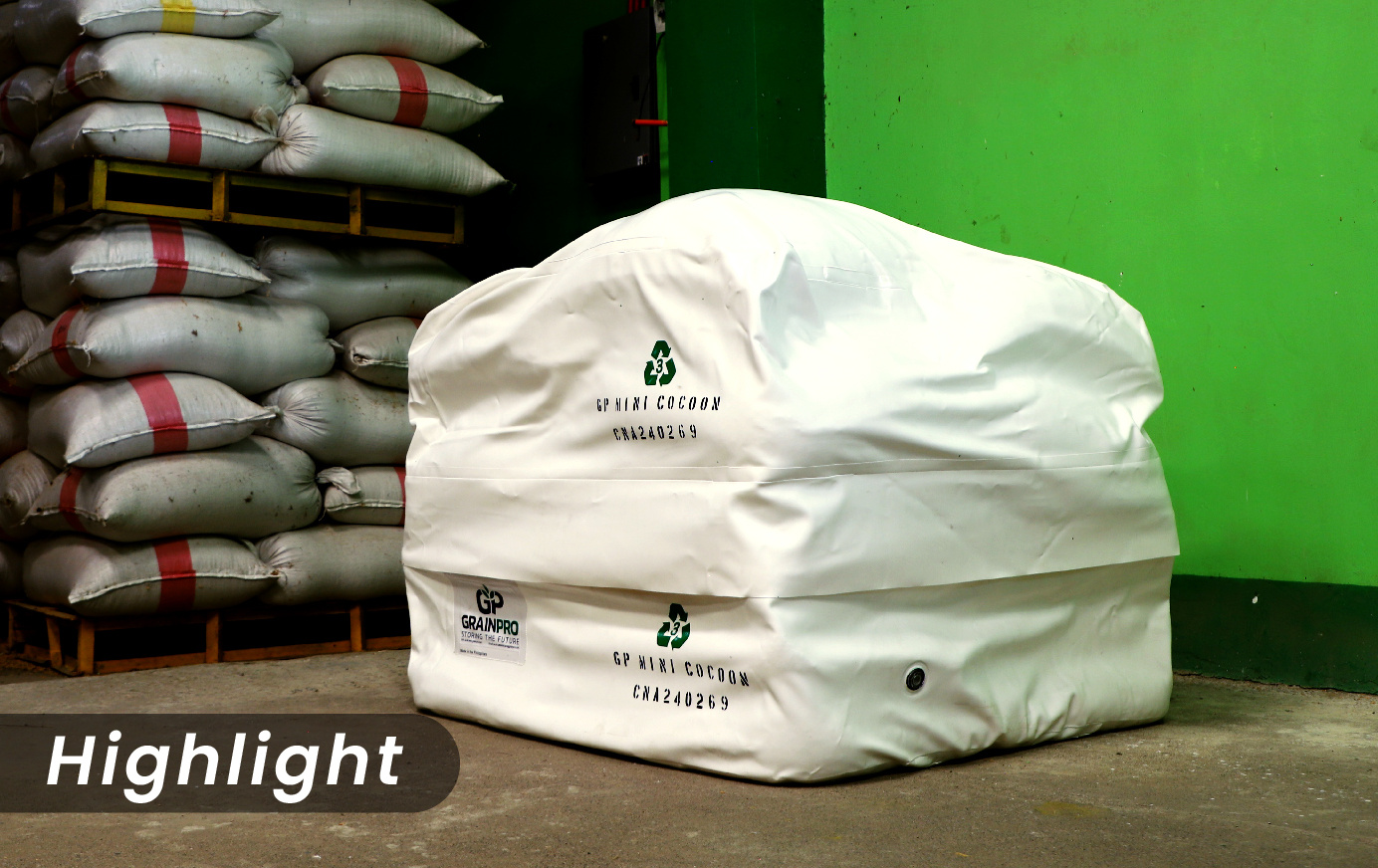Wheat, rice, oats, maize, and many more – grains are among the most widely, if not the most, consumed dry agricultural commodities in the world.
Grains have always been a great source of necessary daily nutrients, including carbohydrates, protein, fiber, B vitamins, and minerals such as iron, magnesium, and zinc. So without a doubt, many of these grains are considered a staple of varying diets across the globe.
Being an essential part of the world’s diet, it is no surprise that grains have always been consistently in-demand throughout the year. However, this fact poses challenges as the global population continually increases, especially in many developing countries wherein access to food can be limited. Meeting this demand is not easy to accomplish, especially when this brings light to another challenge – food losses.
According to the Food and Agriculture Organization (FAO), around one-third of the world’s food is lost and wasted annually. Food loss, which happens during the post-harvest stage, amounts to 14% on average, and around 9% of these food losses are grains and pulses.
Factors That Lead To Post-Harvest Grain Loss
The post-harvest stage happens between harvest and before retail, during which grains undergo different processes from drying, storage, and transport. Post-harvest grain losses are usually caused by multiple factors, from the ever-changing weather and climate to improper handling and inefficient post-harvest systems.
The changing weather and climate have always been causing problems and losses, starting before pre-harvest and extending beyond food production. As one of the earlier post-harvest processes, drying is a crucial stage for grains which requires reaching a specific moisture content level for safe and long-term grain preservation. This process can be heavily affected by environmental conditions, especially with sun drying.
Sun drying is the most commonly used and economical drying practice, yet this method is especially vulnerable to the weather. Erratic changes like sudden rains can re-introduce moisture to dried grains. Having excess moisture content leaves the grains at risk of mold growth and spoilage, and more often than not, this translates to losses as it compromises safety due to the production of harmful aflatoxins. That said, preventing mold growth and avoiding excess moisture is essential in keeping grains at their finest and safest.
On the other hand, proper handling ensures only the ideal moisture content before going through the following post-harvest processes. Proper handling also entails avoiding losses due to contamination and spillage. However, consistency is a major factor that extends beyond one process. Improper handling and inefficient systems are the results of inconsistencies throughout the processing.
Another example of highly damaging inconsistency is a poor storage system, which also leads to infestations. As a food source for many insect species, grains are attractive to various pests and even more so when improperly stored in an unkempt area. Insects, in fact, usually plague farms and warehouses, causing massive losses not only in grain quantity but also in nutritional quality.
Securing Grain Quality and Quantity
Preventing losses can be challenging but achievable with consistent care and proper post-harvest management. While it can be intimidating, preserving quality and quantity does not necessarily need to be a complicated venture. So, here are a few ways to secure grain quality and quantity.
1. Building climate resilience
Being resilient to the changing weather and climate is a valuable asset. Preparing for unforeseen weather conditions is crucial in avoiding moisture-related damage to grains. Thus, one of the best ways to prevent grain losses is by improving the post-harvest system through climate-smart practices and weather-proof solutions.
Since achieving the proper moisture content is vital, using climate-smart drying solutions is a great start, especially for smallholder farmers who rely on weather-dependent sun-drying. These drying solutions have specifically designed protective features that effectively lessen the risk of moisture-related damage from sudden rainy conditions and normal daily temperature changes. Furthermore, climate-smart drying solutions, such as the foldable and portable Collapsible Dryer Case™, can also efficiently protect drying grains from other external factors, such as spillage, contamination, and animal damage.
2. Opting for a reliable long-term storage solution
With consistency at the core, building resilience extends further in the grain post-harvest. The next step is securing grains with a reliable storage system, especially when grains must be either consumed or stored to avoid quality deterioration after drying.
Having a good storage system offers a lot of benefits for this situation. However, achieving a good system requires reliable specifics, like climate-smart protection and efficient pest control. While a good storage system is applicable regardless of storage time, a long-term capability is also a must-have advantage for the all-year in-demand grains.
A reliable innovation, hermetic technology is one of the best choices for long-term storage. This technology utilizes airtight properties to create a stable modified atmosphere that safely preserves agricultural commodities like grains. Its modified atmosphere restricts air and moisture exchange, effectively blocking damaging factors from the external environment and organically eliminating living organisms like molds and insects without using chemicals.
A prime example of long-term hermetic storage is the Cocoon™, which can protect multiple tons worth of grains from sudden conditions like temperature fluctuations and floods. For small-scale grain storage, Hermetic Bag Farm™ offers the same airtight protection as a cost-effective liner for jute bags.
3. Utilizing extra protection during transportation
Grain quality and quantity are often lost during transport due to climate-related damage and unexpected delays. One of the common hurdles is temperature fluctuation due to the different climates of origin and destination.
Thus, transport can be a delicate process, so extra care and proper solutions are crucial to secure grains during long-distance travel. Without preparations, temperature fluctuations can lead to condensation, creating an ideal environment for mold growth and infestations.
Similar to storage, hermetic technology also provides safety during grain transport. Lining jute bags with hermetic bags also offers basic protection from external factors during transport. For loose commodities, using the TranSafeliner Bulk™, an airtight and moisture-proof container liner, can protect the grains from external changes and effectively prevent infestations during travel. On the other hand, the TranSafeliner™ provides added protection for bagged grains and commodities.
With proper post-harvest handling, practices, and solutions, preventing grain losses is possible. Learn more about the best post-harvest solutions to secure the quality and quantity of your grains through the link below.
Date Published: October 1, 2024





